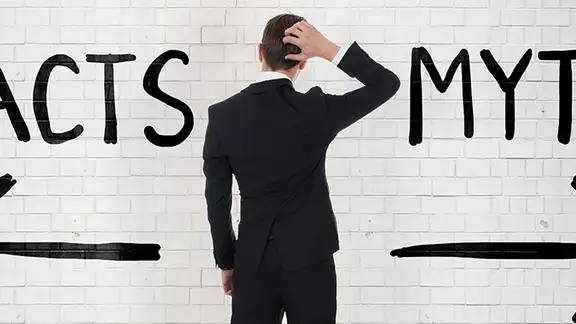What’s new for travel deductions for northern residents?
1 mars 2022

Do you live in a northern part of Canada? Northern residents have some good news for their 2021 tax returns! Travel deductions have been expanded so more residents can claim their expenses for trips to and from northern regions. Keep reading to learn more about the updated deductions for northern residents.
- What are deductions for northern residents?
- What’s new for the travel benefits deduction?
- What do I need to claim this deduction?
- What’s a designated city?
- How do I know if I live in a prescribed zone?
- What if I recently moved to a prescribed zone?
What are deductions for northern residents?
If you lived in the northern regions of Canada for at least 6 consecutive months, you might be able to claim a residency deduction and/or a deduction for travel benefits on your return. These deductions are designed to help offset the additional costs of living in a remote area by lowering the amount of taxes you owe.
You can claim these deductions on your return using the northern residents deduction (T2222) form. If you're a Québec resident, you can also claim the related provincial deductions with form TP-350.1-V. To learn more about northern residents deductions, visit the H&R Block Online Help Centre.
What’s new for the travel benefits deduction?
In previous years, you could only claim the travel benefits deduction (or travel deduction, if you’re a Québec resident) if you worked in a prescribed zone and paid for trips outside of your region for which you received a taxable travel allowance from your employer. Now, you can claim a deduction for personal trips on your 2021 return, even if you’re not employed.
If you or someone in your household travelled within Canada during the year, you can claim the cost of up to 2 trips for each family member. If you travelled for medical reasons, there’s no limit on the number of trips you can claim.
The amount you can claim is the lowest of the following amounts:
- The cost of your trip (including what you paid for transportation and accommodations)
- The lowest return airfare to the closest designated city when you took your trip
- Up to $1200 per family member
Keep in mind, if you received a taxable travel allowance from your employer, you can still claim your taxable travel benefits like last year. Visit the H&R Block Online Help Centre to learn more about claiming taxable travel benefits.
Note: If you get a non-taxable travel allowance or any other non-taxable travel assistance from your employer, you can’t claim the travel benefits deduction on your return.
What do I need to claim this deduction?
You’ll claim this deduction when you prepare and file the northern residents deduction (T2222) form with your 2021 return. You’ll need:
- The date your trip began (to calculate the lowest return airfare between where you travelled and a designated city)
- Receipts for your transportation (for example, air, train, bus fare or vehicle expenses)
- Receipts for your accommodations (for example, the cost of your motel or hotel)
If you don’t have your receipts, there’s a simplified method you can use to calculate your meal and vehicle expenses, but there is no simplified method for other expenses.
If you chose to go with the simplified method to claim your meals, you can claim $22 per meal for up to three meals a day (tax included). When it comes to claiming your vehicle expenses, you can claim a per-kilometer rate for how far you traveled. Keep in mind, the rate you can claim will depend on which province and territory you started your travel from. Even though you don’t have to hold onto your receipts, you should still hang onto documentation that can support your claim(s).
What’s a designated city?
A designated city is the city closest to where you live. You can’t claim more than the cost of the lowest return airfare to that city on the day you took your trip (even though you may not have travelled to that city or even travelled by air). The designated cities are:
- Vancouver, BC
- Calgary, AB
- Edmonton, AB
- Saskatoon, SK
- Winnipeg, MB
- North Bay, ON
- Toronto, ON
- Ottawa, ON
- Montréal, QC
- Québec, QC
- Moncton, NB
- Halifax, NS
- St. John's, NL
How do I know if I live in a prescribed zone?
For all northern residents deductions, where you live determines how much you can claim. For example, you can claim the deduction amounts in full if you live in a prescribed northern zone (Zone A). If you live in a prescribed intermediate zone (Zone B), you’re only eligible for half of the deduction amounts.
To find out if you live in a prescribed zone, check the following list from the CRA and Revenu Québec:
- Northern zone (Zone A)
- Intermediate zone (Zone B)
- Northern zone (Zone A) – Québec only
- Intermediate zone (Zone B) – Québec only
What if I recently moved to a prescribed zone?
If you recently moved but haven’t lived in a prescribed zone for at least 6 months, you can file your 2021 return without claiming your deductions. Once you qualify, you can request to change your return and claim your deductions retroactively. If you filed your return using H&R Block’s Do It Yourself tax software, adjusting your return is even easier with our ReFILE feature.
Ready to file? H&R Block makes sure you get the maximum refund*. Get help from the largest network of reliable Tax Experts by choosing one of four convenient ways to file: File in an Office, Drop-off at an Office, Remote Tax Expert, or Do It Yourself Tax Software.



